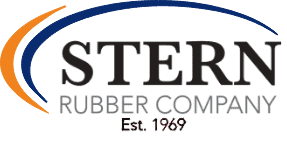Styrene-butadiene rubber is a mixture of two monomers, styrene and butadiene, and is a replacement for natural rubber. SBR is a synthetic rubber and is derived, like other synthetic rubbers, from petroleum. SBR was created prior to World War II by a German chemist Walter Bock and Edward Tschunkur in 1933. The United States of America, during World War II, created the U.S. Synthetic Rubber Program, to produce government rubber and used a lot of SBR, since natural rubber was unavailable due to the occupation of the Southeast Asia by the Japanese. Being a general-purpose rubber, it was originally call Buna S by Edward Tschunkur and Walter Bock, who created the first patent. The United States called their SBR formula GR-S, which stands for Government Rubber-Styrene.
Styrene-Butadiene rubber has strong abrasion resistance, crack resistance and outstanding aging characteristics when using additives. Automobile tires contain types of SBR materials, since it improves better wet grip and less rolling resistance. SBR is far superior to natural rubber, since styrene gives the rubber a less tacky feel and produces a harder rubber. Carbon black is added to SBR to increase its overall strength and hardness. Stern Rubber Company compounds our SBR at our Staples, Minnesota facility, and mills our rubber on our rotary milling machines. Hydrocarbons, like petroleum, weaken and cause the SBR rubber to swell, a similar reaction as natural rubber. Also, over time, SBR and natural rubber can become degraded by atmospheric oxygen and ozone, but with SBR with its increased interlinked molecular chains, oxidation tends to harden the SBR, unlike natural rubber which tends to soften.
Styrene-butadiene rubber also lends itself to blending with other rubbers and is often combined with natural rubber or neoprene. Depending on the ratios of the SBR, natural and neoprene, different characteristic can be created and used in applications that won’t work if you used SBR alone. If you add an SBR with a high styrene ratio to the formula, you will get a very hard rubber with a hard durometer that mimics plastic. The temperature range of SBR is between -40⁰F to 250⁰F and has an approximate 400% elongation range.
Styrene-Butadiene is used in some chewing gums and in surgical gloves, but SBR is used extensively in the tire industry. At Stern Rubber Company, we mold products such as gaskets, yard toys, hoses, dog toys, idler wheels, marine products, agricultural equipment, fitness equipment, rollers and window seals using SBR. We also use an SBR and neoprene blend for motor mounts, isolators and other recreational vehicle products. Rubber to metal bonding is another excellent application for SBR, including bonding to other substrates as well.
